In 2023, Tamil Nadu implemented an initiative to strengthen mortality statistics ensure 100% ascertainment of causes of death in two pilot districts of Krishnagiri and Karur.
Most deaths occur at home without medical certification. Verbal autopsy fills this gap for better health planning, disease surveillance, and evidence-based policymaking.
15,000 verbal autopsies reduced ill-defined deaths from 40–50% to 8–15%. The model is expanding statewide.
Led by Tamil Nadu’s health authorities with WHO support, the initiative combined training, digital tools, and data analysis to strengthen Civil Registration and Vital Statistics systems.

Tamil Nadu’s success in integrating verbal autopsy into CRVS systems is a model for scalable, data-driven health planning. WHO is proud to support this transformative journey.

I was nervous when they came to ask about my husband's death, but the nurse accompanying the interviewer spoke kindly and explained everything. She said it was to help improve health services. I shared what I knew about his sickness. It felt like someone was listening to our story. I didn’t know such interviews could help the government plan better hospitals or medicines. I hope this helps others like us.
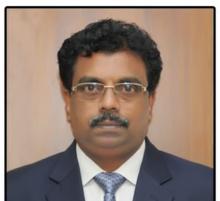
The District Civil Registration System (CRS) approach marks a major step forward in Tamil Nadu’s public health strategy. By integrating verbal autopsy and digital tools, we’ve improved the accuracy of mortality data, especially for deaths outside health facilities. The success in Krishnagiri and Karur shows how collaboration and innovation can transform data into action. As we expand this model, we remain committed to ensuring every death is counted and every cause is known for a healthier Tamil Nadu.
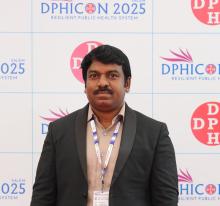
The district CRS approach has been transformative for Krishnagiri. During the pre-pilot phase, we uncovered major gaps in mortality reporting, especially among under-five deaths, which led to corrective actions to ensure systematic capture. With verbal autopsy and the digital PCVA platform, our medical officers now efficiently assign causes of death, and primary health care teams are empowered to use this data for targeted interventions. Access to age, gender, and cause-specific indicators is now shaping our public health strategies more effectively.
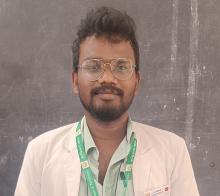
As a PHC Medical Officer, I was initially unfamiliar with the nuances of verbal autopsy and International Classification of Diseases coding. The training helped me understand the importance of accurate cause-of-death certification, especially for home deaths. During field implementation, I noticed that families were more willing to share details when approached with empathy and clarity.
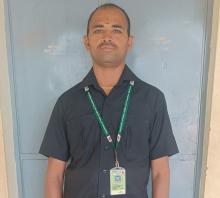
Conducting verbal autopsies in Karur was both challenging and deeply rewarding. Many families were initially hesitant to speak about the death, but with patience and empathy, we were able to build trust. I remember one case where the family had lost a young man to a sudden cardiac event. Through the interview, we uncovered a history of untreated hypertension, which helped the physician assign a more accurate cause of death. The training we received, especially on using the Open Data Kit tool and handling sensitive conversations, was crucial. The supervision and feedback from our PHC medical officers helped us improve our technique. I feel proud that our work is contributing to better health planning and awareness in our district.
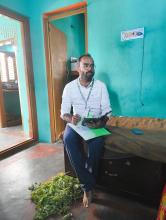
In Krishnagiri, the field experience was intense due to the high volume of cases and the diversity of communities. One of the most impactful interviews I conducted was with a family who had lost a young woman to suicide. The open narrative revealed underlying mental health struggles that had gone unnoticed. It was emotionally difficult, but it reinforced the importance of our role in capturing these stories. Despite challenges like locating households and occasional resistance, the community gradually understood the value of our work. I believe these efforts will lead to stronger public health responses, especially in areas like injury and mental health prevention.

The CRS report has reshaped our understanding of mortality patterns in both Krishnagiri and Karur. We’ve moved from fragmented data to a comprehensive profile that highlights key issues like ischemic heart disease, external injuries, and rising self-harm among youth. These insights are driving focused noncommunicable disease programmes, mental health outreach, and road safety initiatives. We’re now planning to institutionalize quarterly mortality reviews at the block level and integrate findings into our district health action plans.
“I was nervous when they came to ask about my husband's death, but the nurse accompanying the interviewer spoke kindly and explained everything. She said it was to help improve health services. I shared what I knew about his sickness. It felt like someone was listening to our story. I didn’t know such interviews could help the government plan better hospitals or medicines. I hope this helps others like us,” said Ms Shanthi, a 44-year-old widow from Krishnagiri district, in Tamil Nadu, India.
Ms Shanthi had taken part in a verbal autopsy interview, which helps the government to collect cause-of-death information, and is essential for public health planning, disease surveillance, and evidence-based policymaking. Her interview was one of 15, 000 verbal autopsies that the government has conducted since 2023 to determine the medical causes of all deaths in two districts of Krishnagiri and Karur.
Although the state of Tamil Nadu registers nearly all deaths, only 43% have a medically certified cause of death (MCCD). All deaths in institutions are accurately recorded, but home deaths, where over 70% of deaths occur, have significantly lower certification rates of 15 -25%.
Through integrating verbal autopsy methods with MCCD and building capacity at the district level, Tamil Nadu has successfully documented the cause of death for every registered death in the pilot districts. This sets a precedent for scalable mortality surveillance and strengthening of the Civil Registration and Vital Statistics (CRVS) system across the state and beyond.
The initiative contributes to achieving universal health coverage (UHC) by promoting data-driven health planning and strengthening institutional mechanisms for legal and statistical death registration.
WHO, through the UHC Partnership, provided strategic, financial, and technical support to Tamil Nadu’s CRVS strengthening initiative, including training, digital innovation, and guidance for implementation and scale up. It provided financial and technical support including training for field staff and medical officers, implementation guidance, supervision frameworks, data analysis, and report development.
"The District Civil Registration System (CRS) approach marks a major step forward in Tamil Nadu’s public health strategy. By integrating verbal autopsy and digital tools, we’ve improved the accuracy of mortality data, especially for deaths outside health facilities. The success in Krishnagiri and Karur shows how collaboration and innovation can transform data into action. As we expand this model, we remain committed to ensuring every death is counted and every cause is known for a healthier Tamil Nadu," said Dr. A. Somasundaram, Director of Public Health and Preventive Medicine, Tamil Nadu.
The UHC Partnership operates in over 125 countries, representing over 3 billion people. It is supported and funded by Belgium, Canada, the European Union, France, Germany, Ireland, Luxembourg, Japan, the United Kingdom of Great Britain and Northern Ireland, and WHO.

Ms. Shanthi, Linganampatti, Kelamangalam Block, Krishnagiri district, Tamil Nadu, ©WHO India
The journey to strengthen mortality statistics in Tamil Nadu began with a pre-pilot initiative in Krishnagiri district in 2023. In this phase, trained Health and Sanitary Inspectors used verbal autopsy data to ascertain the causes of death for 100 cases using verbal autopsy data, and this was reviewed by physicians trained in cause-of-death determination. Operational challenges surfaced during the pre-pilot, particularly for medical officers tasked with manually reviewing extensive forms.
Building on these lessons, the full-scale pilot was launched in Krishnagiri and Karur districts. WHO’s collaborative and hands-on approach, alongside partners Indian Council of Medical Research, National Institute of Epidemiology, and Madras Medical College - Institute of Community Medicine, was instrumental in the successful rollout and planning for scale-up.
WHO, through the UHC Partnership, introduced a digital Physician-Certified Verbal Autopsy (PCVA) portal. This streamlines cause-of-death certification and enables multi-level monitoring from primary health care (PHC) centres to the state level. WHO also facilitated Tamil Nadu’s transition to the International Classification of Diseases (ICD-11) coding, which ensures global alignment while maintaining compatibility with existing systems.
"The district CRS approach has been transformative for Krishnagiri. During the pre-pilot phase, we uncovered major gaps in mortality reporting, especially among under-five deaths, which led to corrective actions to ensure systematic capture. With verbal autopsy and the digital PCVA platform, our medical officers now efficiently assign causes of death, and primary health care teams are empowered to use this data for targeted interventions. Access to age, gender, and cause-specific indicators is now shaping our public health strategies more effectively," said Dr. Ramesh Kumar, District Health Officer Krishnagiri.

Meeting about CRVS, ©WHO India
In collaboration with the government, WHO supported a robust capacity-building strategy, which underpinned the success of the pilot initiative. In Krishnagiri and Karur, 80 and 50 master trainers facilitated training for verbal autopsy interviewers and medical officers respectively, With their support, WHO successfully trained 87 verbal autopsy interviewers in Karur and 155 in Krishnagiri, and trained 79 medical officers for PCVA in Karur and 106 Krishnagiri. This ensured full coverage across PHC centres and blocks, which are administrative areas covering between 100 000 to 200 000 people.
“As a PHC Medical Officer, I was initially unfamiliar with the nuances of verbal autopsy and International Classification of Diseases coding. The training helped me understand the importance of accurate cause-of-death certification, especially for home deaths. During field implementation, I noticed that families were more willing to share details when approached with empathy and clarity,” said Dr. Kabilan, Medical Officer, Karur.
WHO also supported the sensitization of Village Health Nurses, Sector Health Nurses, and Village Administrative Officers who serve as death registrars in order to promote community awareness and encourage the preservation of medical records, which are vital for accurate assessments.
"Conducting verbal autopsies in Karur was both challenging and deeply rewarding. Many families were initially hesitant to speak about the death, but with patience and empathy, we were able to build trust. I remember one case where the family had lost a young man to a sudden cardiac event. Through the interview, we uncovered a history of untreated hypertension, which helped the physician assign a more accurate cause of death. The training we received, especially on using the Open Data Kit tool and handling sensitive conversations, was crucial. The supervision and feedback from our PHC medical officers helped us improve our technique. I feel proud that our work is contributing to better health planning and awareness in our district," said Mr Palanisamy, verbal autopsy interviewer, Karur.
"In Krishnagiri, the field experience was intense due to the high volume of cases and the diversity of communities. One of the most impactful interviews I conducted was with a family who had lost a young woman to suicide. The open narrative revealed underlying mental health struggles that had gone unnoticed. It was emotionally difficult, but it reinforced the importance of our role in capturing these stories. Despite challenges like locating households and occasional resistance, the community gradually understood the value of our work. I believe these efforts will lead to stronger public health responses, especially in areas like injury and mental health prevention," said Mr Elango, verbal autopsy interviewer, Krishnagiri.

Workshop about CRVS, ©WHO India
The data from over 15,000 verbal autopsies were successfully merged with existing MCCD records. This integration enabled the analysis of district- and primary care level mortality and led to a dramatic reduction in ill-defined causes of death from 40-50% to just 8-15%. Parallel efforts to improve MCCD also took place including district-wide sensitization, training, and the formation of audit committees to ensure data quality.
WHO, through the UHC Partnership, supports the government to develop an annual statistical report on comprehensive analysis of the implementation and outcomes of the District CRS approach in Karur and Krishnagiri districts. It documents how verbal autopsy and PCVA are integrated into routine CRS processes, presents detailed statistics and findings on causes of death, and suggests recommendations for scaling up the approach across Tamil Nadu and other states in India.
Detailed mortality indicators, including age-standardized death rates, trends in non-communicable diseases, years of life lost, and insights into preventable complications provide actionable evidence for public health planning and targeted interventions.
"The CRS report has reshaped our understanding of mortality patterns in both Krishnagiri and Karur. We’ve moved from fragmented data to a comprehensive profile that highlights key issues like ischemic heart disease, external injuries, and rising self-harm among youth. These insights are driving focused noncommunicable disease programmes, mental health outreach, and road safety initiatives. We’re now planning to institutionalize quarterly mortality reviews at the block level and integrate findings into our district health action plans," said Dr. Manju N V, District Health Coordinator - CRVS.
This initiative exemplifies how strategic partnerships and community engagement can transform mortality data into actionable insights, paving the way for UHC in India. Through strategic guidance, resource mobilization, and technical innovation, WHO has helped Tamil Nadu establish a scalable model for data-driven mortality surveillance and CRVS system strengthening. The initiative has now expanded to two other districts of Perambalur and Tirunelveli and is expected to spread further.
“Tamil Nadu’s success in integrating verbal autopsy into CRVS systems is a model for scalable, data-driven health planning. WHO is proud to support this transformative journey,” said Ms Payden, WHO Representative to India a.i.
